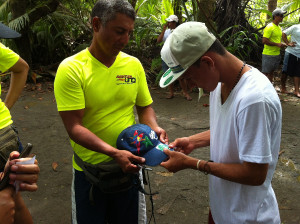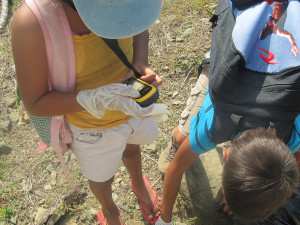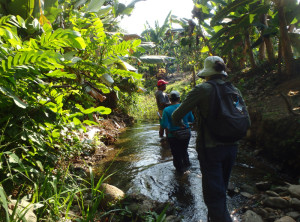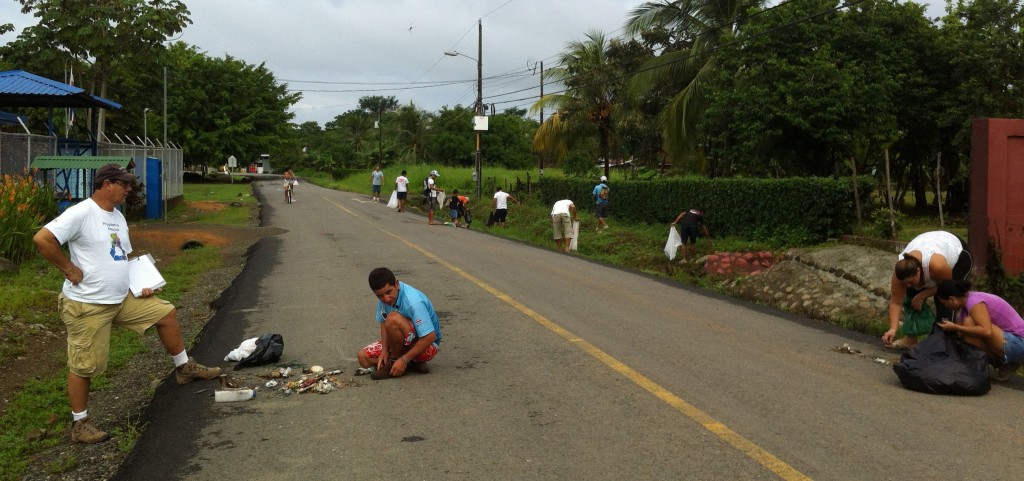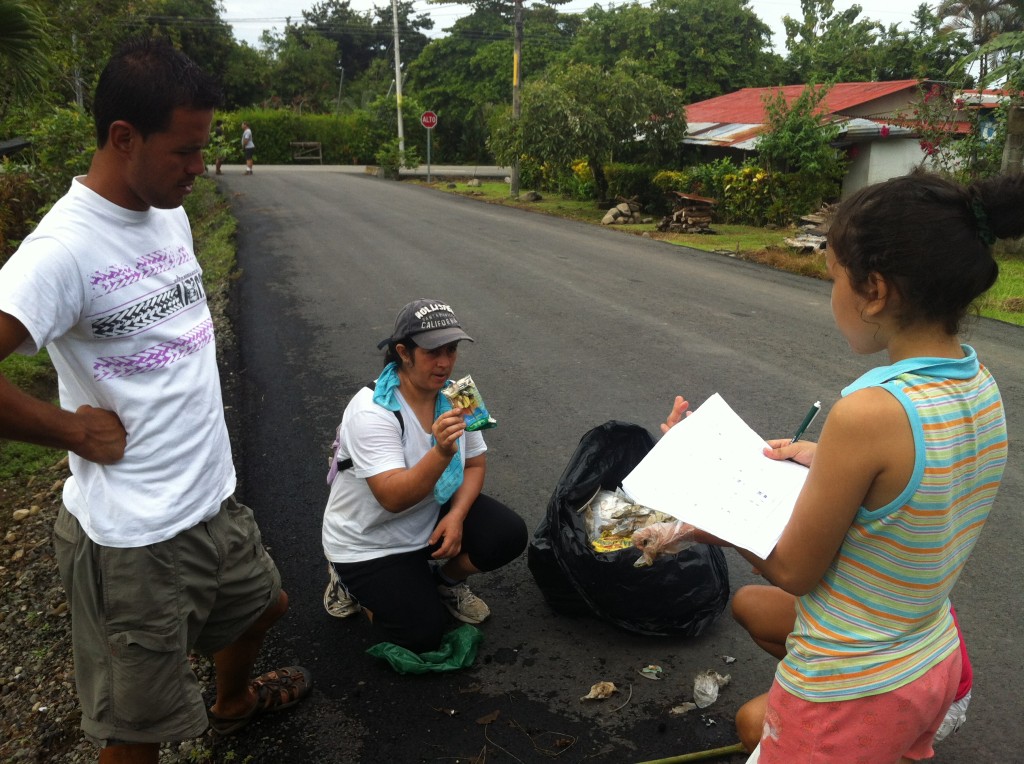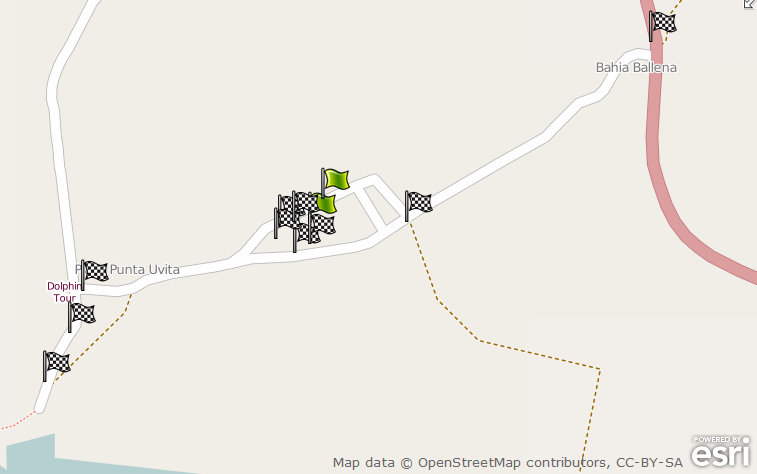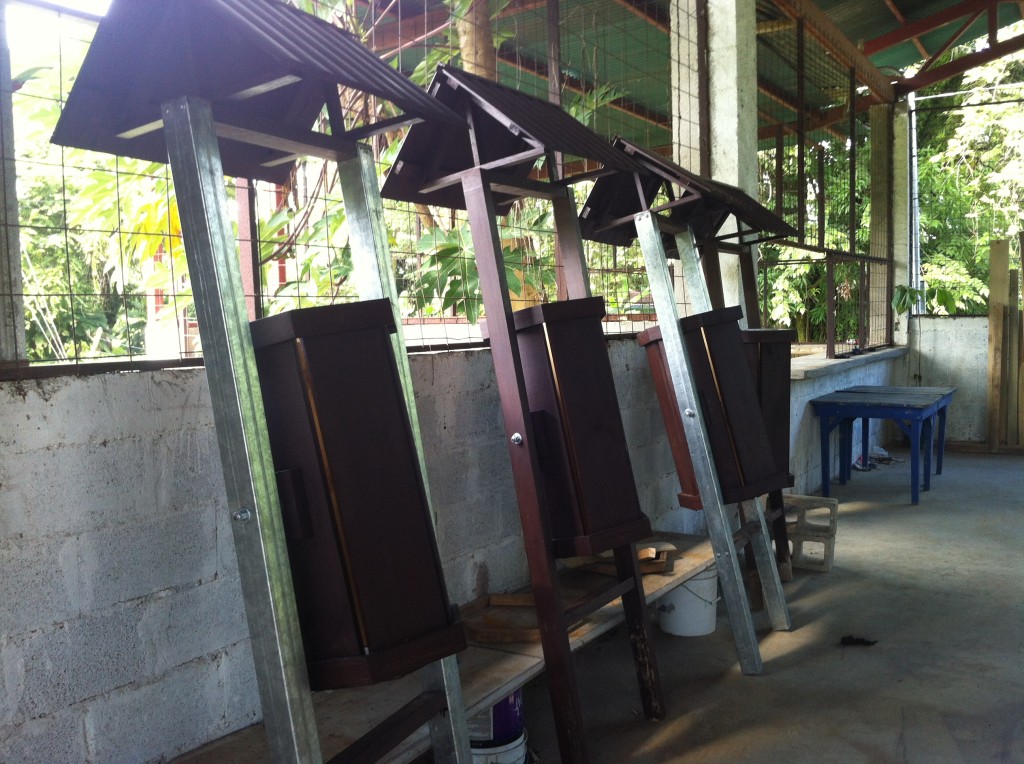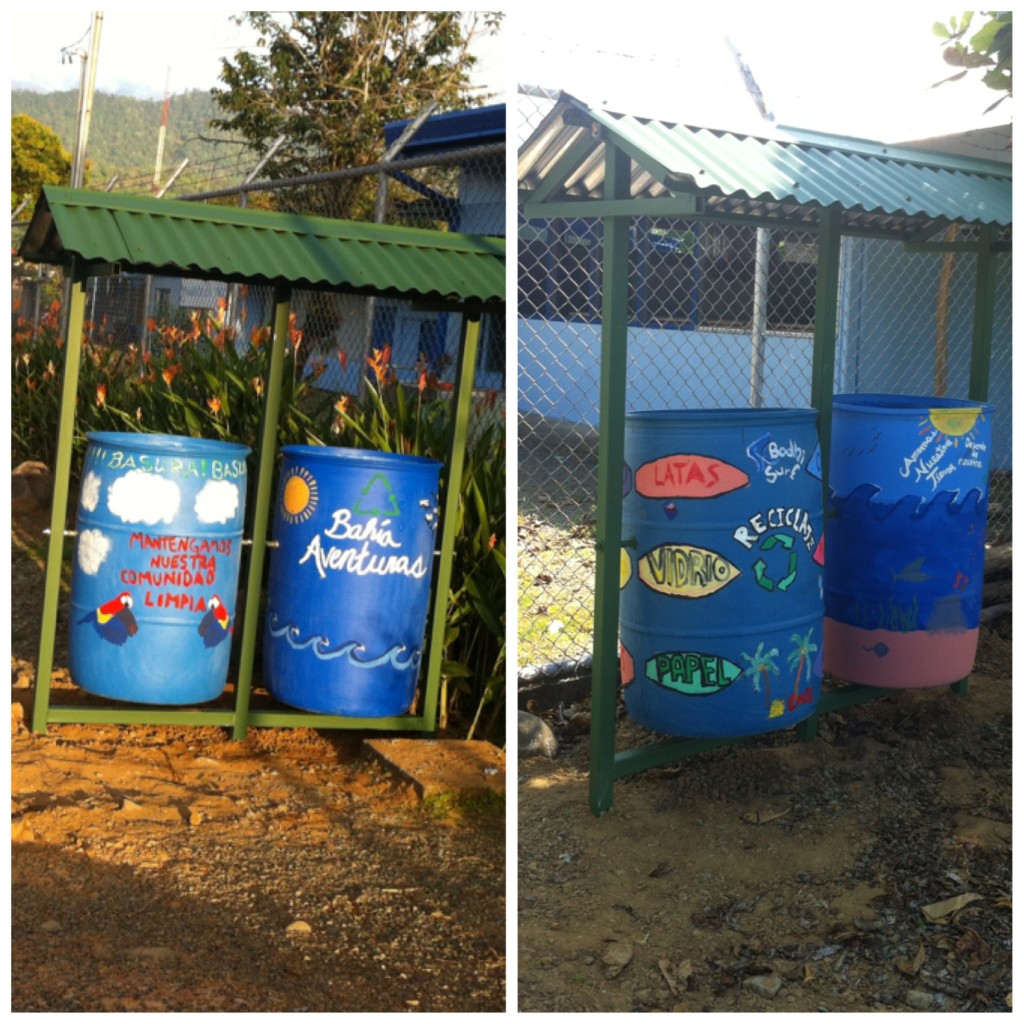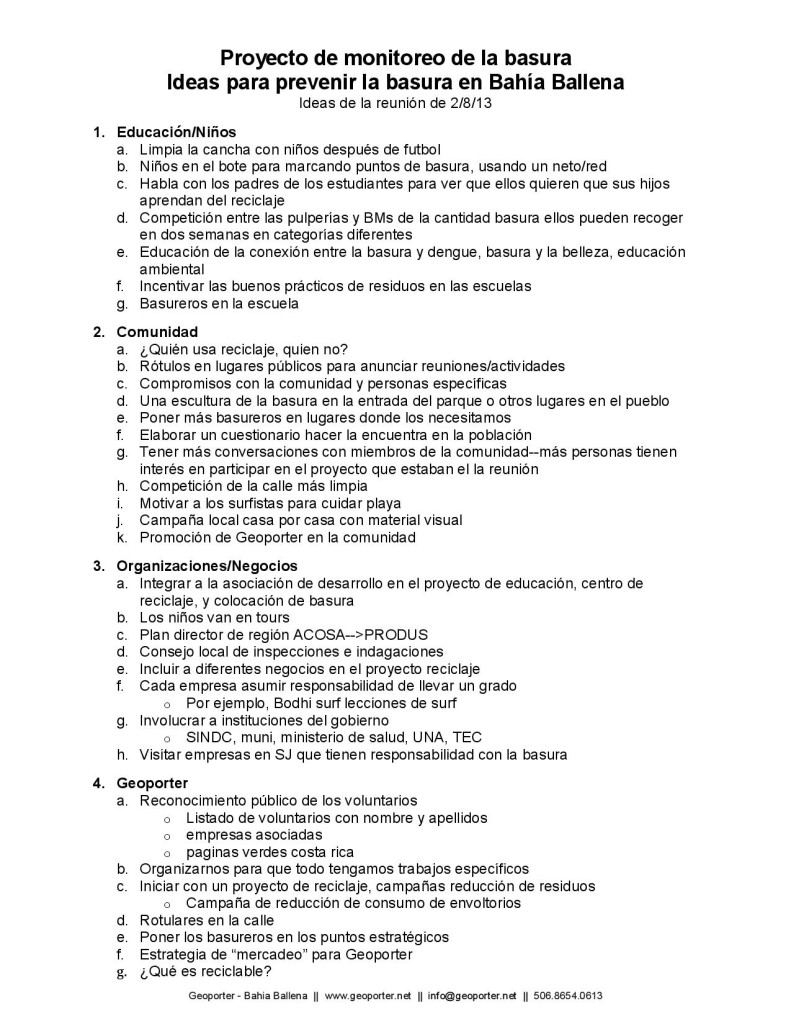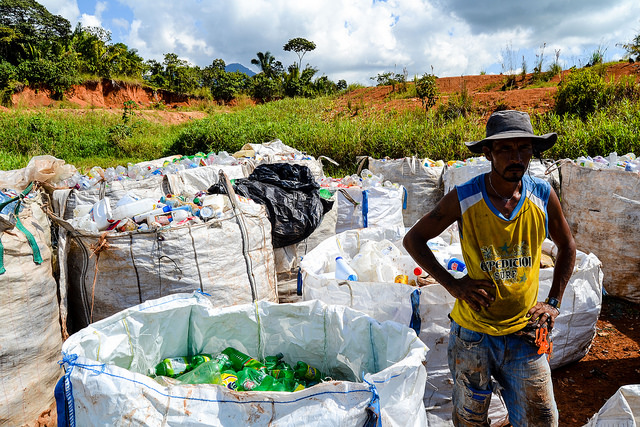
One group’s recyclable materials, December 2015. Photo Credit: Melissa Rejeb
¿A dónde va basura de Costa Ballena? ¿Puedo reciclar?
| El Proyecto Calles Limpias, Aguas Limpias de Geoporter, ha estado mapeando la basura en las calles y las playas desde el año 2012. Con esta información, las acciones han sido tomadas por varios negocios y organizaciones comunitarias para prevenir la basura entren en nuestras calles y en última instancia nuestros océanos.
Queríamos saber más sobre de dónde nuestra basura va y lo que ocurre con los materiales reciclables cuando son mezclados con la basura. Compartimos aquí lo que hemos aprendido de nuestro reciente viaje a la Municipalidad de Osa y el relleno sanitario, donde nuestra basura semanal va. Nosotros le enviaremos información actualizada en un futuro próximo. Al final, le toca a nosotros para asumir la responsabilidad de los residuos que generamos. Podemos tomar medidas para reducir, reutilizar y reciclar. |
Where does Costa Ballena Trash Go? Can I Recycle?
| Geoporter’s Clean Streets, Clean Waters Project has been mapping street and beach trash since 2012. With this information, actions have been taken by various community businesses and organizations to prevent trash from entering our streets and ultimately our oceans.We wanted to know more about where our garbage goes and what happens to recyclables when they are mixed in with trash. We share here what we learned from our recent trip to the Municipality of Osa and the landfill where our weekly garbage goes. We will send updated information in the near future.
In the end, it’s up to us to take responsibility for the waste we generate. We can take steps to reduce, reuse and recycle. |
¿A dónde va mi basura?
El vertedero está justo al sur del puente en Palmar Norte. En 2016, hay planes para abrir una nueva relleno sanitario en la propiedad. Este nuevo centro estará cubierto y permitirá a la protección de los trabajadores contra el sol y lluvia.
¿Puedo reciclar?
Sí. Actualmente hay 3 familias que han recibido el permiso de la Municipalidad para separar los materiales reciclables de la basura, todos los días cuando la basura llega al sitio.
¿Debo separar mis materiales reciclables desde mi basura?
No es necesario. En el próximo año cuando el nuevo centro de recepción se ha abierto, Sí.
¿Por qué esperar hasta que este centro ha abierto? Debido a que las familias van a trabajar juntos cuando se abre el nuevo relleno sanitario. Actualmente trabajan para sí mismos, de recibir el pago de lo que recogen.
¿Qué se recicla?
Las botellas de vidrio, botellas de plástico y latas de aluminio se reciclan. El Municipio no tiene actualmente la capacidad de reciclar papel o cartón
| Where does my trash go? The landfill is just south of the bridge in Palmar Norte. In 2016, there are plans to open a new receiving station on the property. This new center will be covered and will enable the workers protection from the sun and rain.Can I recycle? Yes. Currently there are 3 families that have received permission from the Municipality to separate recyclable materials from the trash, daily when the trash arrives on site. Should I separate my recyclables from my trash? Why wait until this center has opened? Because the families will be working together when the new center opens. Currently they work for themselves, receiving payment from what they collect. What is recycled? |
|
|

 Geoporter Assistants: We provided stipends for two local community members to assist the Geoporter Director, allowing Amy to focus on tasks to grow and expand Geoporter. These two Assistants, Luz Badilla and Tania Calderon, have been working approximately ten hours per week since June. They are a wonderful asset to Geoporter, spearheading the day-to-day operations of the “Clean Streets, Clean Waters” and the “Participatory Whale Monitoring” projects. They are also helping with outreach to the community, while stepping into leadership roles and becoming Geoporter instructors at community-based trainings.
Geoporter Assistants: We provided stipends for two local community members to assist the Geoporter Director, allowing Amy to focus on tasks to grow and expand Geoporter. These two Assistants, Luz Badilla and Tania Calderon, have been working approximately ten hours per week since June. They are a wonderful asset to Geoporter, spearheading the day-to-day operations of the “Clean Streets, Clean Waters” and the “Participatory Whale Monitoring” projects. They are also helping with outreach to the community, while stepping into leadership roles and becoming Geoporter instructors at community-based trainings.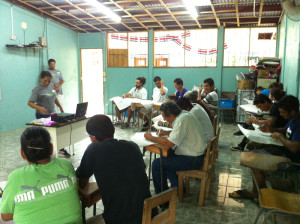 3 New Communities: We expanded the geographic area where we work to include three communities in the Osa Peninsula: Rancho Quemado, El Progreso and Bahía Drake. Two workshops, totaling three days, focused on implementing GIS and GPS to monitor community resources and identify community boundaries. The Geoporter Director and three local Geoporter community members conducted the workshops in each community during the slower tourism months from September to November. This work was conducted as part of the Osa and Golfito Initiative (INOGO) and the Caminos de Liderazgo Project, under the supervision of the Stanford Woods Institute for the Environment. In 2015, we look to continue this collaboration and work with two additional communities conducting similar workshops.
3 New Communities: We expanded the geographic area where we work to include three communities in the Osa Peninsula: Rancho Quemado, El Progreso and Bahía Drake. Two workshops, totaling three days, focused on implementing GIS and GPS to monitor community resources and identify community boundaries. The Geoporter Director and three local Geoporter community members conducted the workshops in each community during the slower tourism months from September to November. This work was conducted as part of the Osa and Golfito Initiative (INOGO) and the Caminos de Liderazgo Project, under the supervision of the Stanford Woods Institute for the Environment. In 2015, we look to continue this collaboration and work with two additional communities conducting similar workshops.
